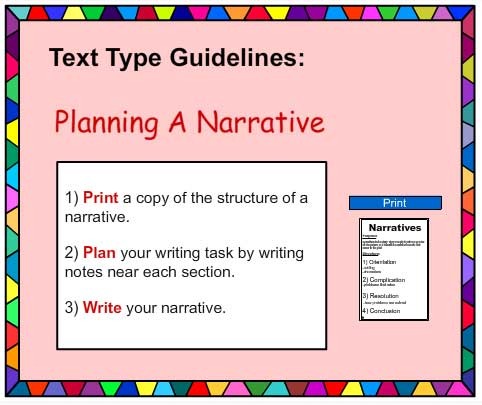Narrative Poster (How To Write A Narrative)
- Grade: Grade 6
Activity type: Printable
To save results or sets tasks for your students you need to be logged in. Join Now, Free
Narrative Poster (How To Write A Narrative)
- Course
English - Grade
Grade 6 - Section
Writing - Outcome
Writing a Narrative: The Great Discovery - Activity Type
Printable - Activity ID
19423

